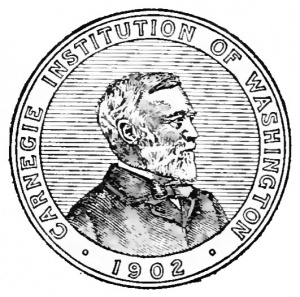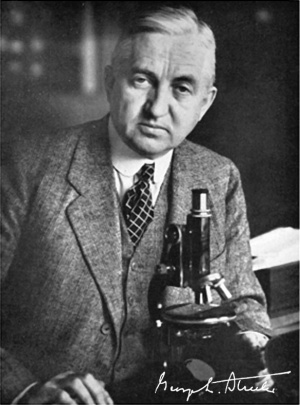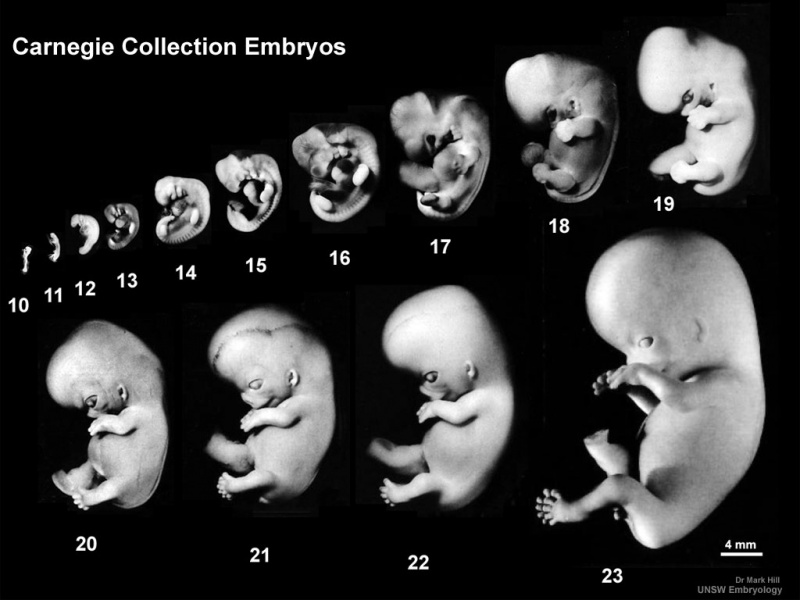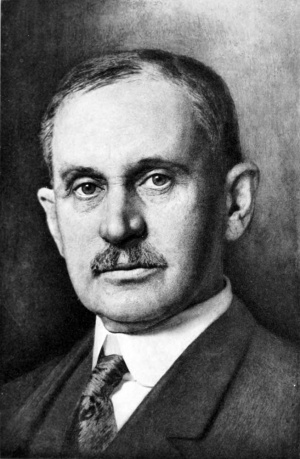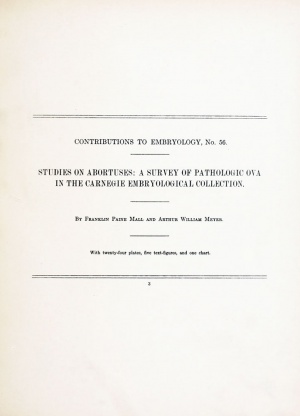Book - Contributions to Embryology: Difference between revisions
mNo edit summary |
m (→Volume XIII) |
||
| Line 256: | Line 256: | ||
===On the development of the lymphatics in the stomach of the embryo pig=== | ===On the development of the lymphatics in the stomach of the embryo pig=== | ||
{{Ref-Cash1921}} | |||
===On the fate of the primary lymph-sacs in th | ===On the fate of the primary lymph-sacs in th | ||
Revision as of 15:49, 29 January 2017
| Embryology - 16 Apr 2024 |
|---|
| Google Translate - select your language from the list shown below (this will open a new external page) |
|
العربية | català | 中文 | 中國傳統的 | français | Deutsche | עִברִית | हिंदी | bahasa Indonesia | italiano | 日本語 | 한국어 | မြန်မာ | Pilipino | Polskie | português | ਪੰਜਾਬੀ ਦੇ | Română | русский | Español | Swahili | Svensk | ไทย | Türkçe | اردو | ייִדיש | Tiếng Việt These external translations are automated and may not be accurate. (More? About Translations) |
Introduction
This historic series of papers published by the Carnegie Institution of Washington in the series "Contributions to Embryology" was published from early in the 20th Century. The papers documented not only early human development, using mainly the Carnegie Collection of embryos, but also that in animal models of development.
Dr. George L. Streeter was editor of this series, from 1917 to 1940 Volumes VIII to XXIX of the Contributions to Embryology of the Carnegie Institution of Washington.
In a letter to Science[1] the Carnegie Institute staff noted:
- "The present staff of the department of embryology, with the approval of the president of the institution, has therefore dedicated Volume XXX, which appeared on December 31, 1942, to Dr.Streeter and has placed his portrait at the head of the volume."
| Contributions Links: Carnegie Collection | Franklin Mall | George Streeter | Carnegie Stages | Carnegie Embryos | Carnegie Models | Human Embryo Collections | Embryology History |
Carnegie Embryos
Volume I
Washington, 1915
On the Fate of the Human Embryo in Tubal Pregnancy
By Franklin P. Mall (3 plates)
On the Fate of the Human Embryo in Tubal Pregnancy
Volume IV
The human magma reticule in normal and in pathological development
By Franklin P. Mall (3 plates) 5-26
Carnegie Institution No.10 normal and in pathological development
On the development of the lymphatics of the lungs in the embryo pig
By R. S. Cunningham (5 plates) 45-68
Carnegie Institution No.12 Pig Lymphatics
- The structure of chromophile cells of the nervous system By E. Y. Cowdry (1 plate) 27-43
- No. 13. Binucleate cells in tissue cultures. By Charles C. Macklin (4 plates, containing 70 figures) 69-106
Volume V
Washington, 1917
The Development of the Cerebro-Spinal Spaces in Pig and in Man By Lewis H. Weed
Cyclopia Ix The Human Embryo By Franklin P. Mall.
Quantitative Studies On Mitochondria In Nerve-Cells
Development Of Connective-Tissue Fibers In Tissue Cultures Of Chick Embryos By Margaret Reed Lewis.
Origin And Development of the Primitive Vessels of the Chick and of the Pig By Florence R. Sabin.
Volume VI
Washington, 1917
A Human Embryo of Twenty-Four Pairs of Somites
By Franklin Paradise Johnson (8 plates and 9 text-figures) 125-168
Johnson FP. A human embryo of twenty-four pairs of somites. (1917) Carnegie Instn. Wash. Publ., Contrib. Embryol., 21: 125-168.
Volume VII
Washington, 1918
The histogenesis and growth of the otic capsule and its contained periotic tissue-spaces in the human embryo
Streeter GL. The histogenesis and growth of the otic capsule and its contained periotic tissue-spaces in the human embryo. (1918) Contrib. Embryol., Carnegie Inst. Wash. 8: 5-54.
Carnegie Institution No.20 Otic Capsule: Introduction | Terminology | Historical | Material and Methods | Development of cartilaginous capsule of ear | Condensation of periotic mesenchyme | Differentiation of precartilage | Differentiation of cartilage | Growth and alteration of form of cartilaginous canals | Development of the periotic reticular connective tissue | Development of the perichondrium | Development of the periotic tissue-spaces | Development of the periotic cistern of the vestibule | Development of the periotic spaces of the semicircular ducts | Development of the scala tympani and scala vestibuli | Communication with subarachnoid spaces | Summary
| Bibliography | Explanation of plates
The genesis and structure of the membrana tectoria and the crista spiralis of the cochlea
van der Stricht O. The genesis and structure of the membrana tectoria and the crista spiralis of the cochlea. (1918) Contrib. Embryol., Carnegie Inst. Wash., 21: 55-86.
Carnegie Institution No.21 Cochlea Structures
Study of a human spina bifida monster with encephaloceles and other abnormalities
By Theodora Wheeler (4 plates) 87-110
Carnegie Institution No.22 Human Spina Bifida
A human embryo before the appearance of the myotomes
By N. William Ingalls. (5 text-figures and 4 plates) 111-134
Ingalls NW. A human embryo before the appearance of the myotomes. (1918) Contrib. Embryol., Carnegie Inst. Wash. No.23 Publ. 227, 7:111-134.
Carnegie Institution No.23 Early Human Embryo
Volume VIII
The developmental alterations in the vascular system of the brain of the human embryo
Streeter, GL. The Developmental Alterations in the Vascular System of the Brain of the Human Embryo. (1921) Contrib. to Embryol. 8:7-38.
The mitochondrial constituents of protoplasm
by E. V. Cowdry.
Carnegie Institution No.25 Mitochondria
The development and reduction of the tail and of the caudal end of the spinal cord
By Kanae Kunitomo. (Four plates, two text-figures)
Carnegie Institution No.26 Caudal Spinal Cord
Volume IX
"The papers included in this volume have been contributed as a memorial by present and former members of the staff of the late Professor Franklin Paine Mall, in recognition of his inspiring leadership and in response to the strong feeling of affection with which they had come to regard him. A volume of this nature had been under consideration, to commemorate the approaching twenty-fifth anniversary of his occupancy of the chair of anatomy in the Johns Hopkins University. His untimely death, however, just at the close of a quarter century of remarkable producti\ity, interfered with the project as originally planned and left it possible to offer only a belated tribute in the form of the present volume."
Baltimore, August 1, 1919.
--Mark Hill 00:44, 27 March 2012 (EST) Only the introductory text has been added for the papers from Volume IX listed below.
- No.27 The Development And Function Of Macrophages In The Repair Of Experimental Bone- Wounds In Rats Vitally Stained With Trypan-Blue. by Charles Clifford Macklin.
- No.28 Cytoplasmic Structures In The Seminal Epithelium Of The Opossum. by J. Duesberg.
- No.29 On The Widespread Occurrence Of Reticular Fibrils Produced By Capillary Endothelium. by George W. Corner.
- No.30 Variability In The Spinal Column As Regards Defective Neural Arches (Rudimentary Spina Bifida). by Theodora Wheeler.
- No.31 The Arrangement And Structure Of Sustentacular Cells And Hair-Cells In The Developing Organ Of Corti. by 0. Van Der Stricht.
- No.32 The Sino-Ventricular Bundle : A Functional Interpretation Of Morphological Findings. by Robert Retzer.
- No.33 A Study Of The Superior Olive. by George B. Jenkins.
- No.34 The Development Of The External Nose In Whites And Negroes. by Adolph H. Schultz.
- No.35 Muscular Contraction In Tissue-Cultures. by Margaret Reed Lewis.
- No.36 Studies On The Origin Of Blood-Vessels And Of Red Blood-Corpuscles As Seen In The Living Blastoderm Of Chicks During The Second Day Of Incubation. by Florence R. Sabin.
- No.37 Notes On The Postnatal Growth Of The Heart, Kidneys, Liver, And Spleen In Man. by Robert Bennett Bean.
- No.38 A Morphological Study Of The Tracheal And Bronchial Cartilages. by William Snow Miller.
The Cartilaginous Skull Of A Human Embryo Twenty-One Millimeters In Length
by Warren H. Lewis (with five plates)
Lewis WH. The cartilaginous skull of a human embryo twenty-one millimeters in length. (1920) Contrib. Embryol., Carnegie Inst. Wash. Publ. 272, 9: 299-324.
Carnegie Institution No.39 The Cartilaginous Skull.
Hydatiform Degeneration In Tubal And Uterine Pregnancy
by Arthur William Meyer (with six plates)
Meyer AW. Hydatiform degeneration in tubal and uterine pregnancy. (1920) Carnegie Instn. Wash. Publ., Contrib. Embryol., 40: 327- 364.
Myers BD. A study of the development of certain features of the cerebellum. (1920) Contrib. Embryol., Carnegie Inst. Wash. 41:
Essick CR. Formation of macrophages by the cells lining the subarachnoid cavity in response to the stimulus of particulate matter. (1920) Carnegie Instn. Wash. Publ., Contrib. Embryol., Carnegie Inst. Wash., 42: .
A Human Embryo (Mateer) Of The Presomite Period
by George L. Streeter (seven plates and four text-figures).
Carnegie Institution No.43 The Presomite Embryo
- No.44 The Experimental Production Of An Internal Hydrocephalus. by Lewis H. Weed.
- No.45 On The Origin And Early Development Of The Lymphatic System Of The Chick. by Eliot R. Clark And Eleanor Linton Clark.
- No.46 The Height-Weight Index Of Build In Relation To Linear And Volumetric Proportions And Surface-Area Of The Body During Post-Natal Development. by C. R. Babdeen.
Volume X
Washington, 1921
On the differential reaction to vital dyes exhibited by the two great groups of connective-tissue cells
By Herbert McLean Evans and Katharine J. Scott. (11 plates)
Carnegie Institution No.47 Two Groups of Connective-Tissue Cells
The skull of a human fetus of 43 millimeters greatest length
By Charles C. Macklin. (5 plates containing 47 figures)
Macklin CC. the skull of a human fetus of 43 millimeters greatest length. (1921) Contrib. Embryol., Carnegie Inst. Wash. Publ., 48, 10:59-102.
Carnegie Institution No.48 Human Fetal Skull
- Links: Internet Archive - Volume X
Volume XI
Washington, 1920 No. 49-55
No. 49. Myeloid metaplasia of the embryonic mesenchyme in relation to cell potentialities and differential factors. By Vera Danchakoff (5 plates) 1-32
Studies on the longitudinal muscle of the human colon, with special reference to the development of the taeniae
By Paul E. Lineback (8 text-figures) 33-44
Carnegie Institution No.50 Studies on the longitudinal muscle of the human colon
Experimental studies on fetal absorption
I. The vitally stained fetus. II. The behavior of the fetal membranes and placenta of the cat toward colloidal dyes injected into the maternal blood stream.
By George B. Wislocki (4 plates, 1 text-figure) 45-00
Carnegie Institution No.51 Experimental studies on fetal absorption
A human embryo at the beginning of segmentation, with special reference to the vascular system
By N. William Ingalls (5 plates, 1 text-figure) 61-90
Ingalls NW. A human embryo at the beginning of segmentation, with special reference to the vascular system. (1920) Contrib. Embryol., Carnegie Inst. Wash. Publ. 274, 11: 61-90.
Carnegie Institution No.52 Human Segmentation
The effects of inanition in the pregnant albino rat with special reference to the changes in the relative weights of the various parts, systems, and organs of the offspring
By Lee Willis Barry 91-136
Carnegie Institution No.53 The Effects of Inanition in the Pregnant Albino Rat
A case of true lateral hermaphroditism in a pig with functional ovary
By George W. Corner (1 plate) 137-142
Corner GW. A case of true lateral hermaphroditism in a pig with functional ovary. (1920) Contrib. Embryol., Carnegie Inst. Wash. Publ. , : 137-142.
Carnegie Institution No.54 A case of true lateral hermaphroditism in a pig with functional ovary
Weight, sitting height, head size, foot length, and menstrual age of the human embryo
By George L. Streeter (6 charts, 2 text-figures) 143-170
Streeter GL. Weight, sitting height, head size, foot length, and menstrual age of the human embryo. (1920) Contrib. Embryol., Carnegie Inst. Wash. Publ. , : 143-170.
Carnegie Institution No.55 Human Embryo Size
- Links: Internet Archive - Volume XI
Volume XII
Studies on abortuses: a survey of pathologic ova in the carnegie embryological collection
By Franklin Paine Mall and Arthur William Meyer. (24 plates, 5 text-figures, and 1 chart)
Mall FP. and Meyer AW. Studies on abortuses: a survey of pathologic ova in the Carnegie Embryological Collection. (1921) Contrib. Embryol., Carnegie Inst. Wash. Publ. 275, 12: 1-364.
Contributions Vol.12 No.56 (1921): Preface | 1 Collection origin | 2 Care and utilization | 3 Classification | 4 Pathologic analysis | 5 Size | 6 Sex incidence | 7 Localized anomalies | 8 Hydatiform uterine | 9 Hydatiform tubal | Chapter 10 | 11 Alleged superfetation | 12 Lysis and resorption | 13 Postmortem intrauterine | 14 Hofbauer cells | 15 Villi | 16 Villous nodules | 17 Syphilitic changes | 18 Aspects | Bibliography | Figures
Volume XIII
Washington, 1922
On the development of the lymphatics in the stomach of the embryo pig
Cash JR. On the development of the lymphatics in the stomach of the embryo pig. (1921) Contrib. Embryol., Carnegie Inst. Wash. No. 57.
===On the fate of the primary lymph-sacs in th
